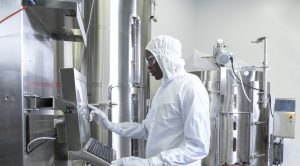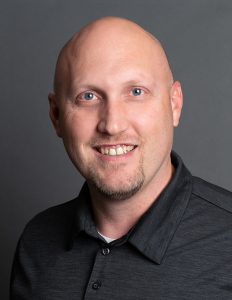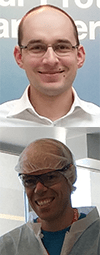 The biotherapeutic market has been rapidly adopting single-use technologies to reduce risk and improve operational efficiencies. For more than 20 years, Thermo Fisher Scientific has pioneered single-use technologies for this industry. Our products have been proven to be robust and scalable from laboratory scale-up to current good manufacturing practice (cGMP) production applications, including single-use bioprocessing equipment, flexible containment, and rigid containment product portfolios.
The biotherapeutic market has been rapidly adopting single-use technologies to reduce risk and improve operational efficiencies. For more than 20 years, Thermo Fisher Scientific has pioneered single-use technologies for this industry. Our products have been proven to be robust and scalable from laboratory scale-up to current good manufacturing practice (cGMP) production applications, including single-use bioprocessing equipment, flexible containment, and rigid containment product portfolios.
Our webinars will explore data, innovative products, and novel strategies featuring single-use solutions for the bioprocessing market.
 |
“Application-Specific Enhancements to Thermo ScientificTM HyPerformaTM Single-Use Bioreactors,” with Ben Madsen
October 8, 2020
  The rapid growth of biotherapeutic manufacturing has created significant demand for workflow solutions featuring greater product yield, lower production costs, and accelerated development timelines. To address these demands, developers have moved away from “one-size-fits-all” approaches and are increasingly focused on solutions that address the specific needs of diverse bioproduction processes. Given this shift toward process-specific solutions, Thermo Fisher Scientific has introduced a series of application-specific enhancements to the HyPerforma Single Use Bioreactor (SUB) product platform, each tailored to the unique requirements of perfusion, intensified fed-batch, and adherent cell cultures. This presentation describes the changes required to meet these specific culture demands and presents case studies for each, highlighting the effects of the process-specific alterations. You will learn about:  The rapid growth of biotherapeutic manufacturing has created significant demand for workflow solutions featuring greater product yield, lower production costs, and accelerated development timelines. To address these demands, developers have moved away from “one-size-fits-all” approaches and are increasingly focused on solutions that address the specific needs of diverse bioproduction processes. Given this shift toward process-specific solutions, Thermo Fisher Scientific has introduced a series of application-specific enhancements to the HyPerforma Single Use Bioreactor (SUB) product platform, each tailored to the unique requirements of perfusion, intensified fed-batch, and adherent cell cultures. This presentation describes the changes required to meet these specific culture demands and presents case studies for each, highlighting the effects of the process-specific alterations. You will learn about:
- Key advantages of mixing and gassing enhancements to HyPerforma SUBs
- System and BPC requirements necessary for upgrades
|
 |
“Aggressive Microbial Production from Inoculation Through Harvest in Single-Use Systems,” with Dmitrij Bugajev and Jason D. Brown
October 22, 2020
 Single-use fermentors enable production facilities to utilize single-use technologies instead of traditional stainless-steel fermentor vessels, achieving equivalent expression with rapidly growing high-density cultures. We will compare some results from various processes with yeast and bacteria before and after technology transferred to single-use at our two facilities. We will give you our feedback as previous end users of stainless-steel fermentors and now of single-use fermentors along with things to considerations that might help you make your transition smooth. We also will discuss single-use processing benefits and time-saving advantages to simplify closed-system production from inoculation through harvest and initial downstream processing. You will learn about: Single-use fermentors enable production facilities to utilize single-use technologies instead of traditional stainless-steel fermentor vessels, achieving equivalent expression with rapidly growing high-density cultures. We will compare some results from various processes with yeast and bacteria before and after technology transferred to single-use at our two facilities. We will give you our feedback as previous end users of stainless-steel fermentors and now of single-use fermentors along with things to considerations that might help you make your transition smooth. We also will discuss single-use processing benefits and time-saving advantages to simplify closed-system production from inoculation through harvest and initial downstream processing. You will learn about:
- How our single-use fermentor and bioprocessing capacities fit into your workflow
- How a fermentation process successfully transitioned to single-use bioprocessing
|
 |
“Bioprocess Selection and Economics: 5,000-L DynaDrive™ Bioreactor Shifting the Paradigm,” with Jeff Johnson, Mark Thomas Smith, and Kevin Mullen
November 12, 2020
 Single-use technologies enable a flexibility and modularity effectively unattainable with more traditional stainless-steel technologies, particularly in upstream bioprocesses. Single-use bioreactors up to 2,000 L are employed largely in preclinical- and clinical-stage bioprocesses to leverage this flexibility. As products reach commercial maturity, scales larger than 2,000 L frequently become desirable to take advantage of economies of scale. With the typical upper limit of single-use bioreactors at 2,000 L, this has traditionally meant transfer to stainless-steel systems. The introduction of the Thermo Fisher Scientific HyPerforma™ DynaDrive™ 5,000-L bioreactor opens a new paradigm of operation in terms of volume, while providing unprecedented ergonomics and flexibility. In tandem with Thermo Fisher, Jeff Johnson (former head of Merck Single-Use Network) has evaluated the operational and economic implications of this new reactor system and shares his perspective of how the biopharma industry might change with the introduction of the DynaDrive system. Kevin Mullen (Senior Product Manager) introduces the DynaDrive systems, and Mark Thomas Smith (Staff R&D Engineer) explores how this technology can meet the demands of intensifying bioprocesses. You will learn about: Single-use technologies enable a flexibility and modularity effectively unattainable with more traditional stainless-steel technologies, particularly in upstream bioprocesses. Single-use bioreactors up to 2,000 L are employed largely in preclinical- and clinical-stage bioprocesses to leverage this flexibility. As products reach commercial maturity, scales larger than 2,000 L frequently become desirable to take advantage of economies of scale. With the typical upper limit of single-use bioreactors at 2,000 L, this has traditionally meant transfer to stainless-steel systems. The introduction of the Thermo Fisher Scientific HyPerforma™ DynaDrive™ 5,000-L bioreactor opens a new paradigm of operation in terms of volume, while providing unprecedented ergonomics and flexibility. In tandem with Thermo Fisher, Jeff Johnson (former head of Merck Single-Use Network) has evaluated the operational and economic implications of this new reactor system and shares his perspective of how the biopharma industry might change with the introduction of the DynaDrive system. Kevin Mullen (Senior Product Manager) introduces the DynaDrive systems, and Mark Thomas Smith (Staff R&D Engineer) explores how this technology can meet the demands of intensifying bioprocesses. You will learn about:
- The introduction of new DynaDrive SUB technology and the associated performance improvements to mass transfer, volume, and scale-up associated therewith
- The economics of total facility cost and equivalent cost of goods (cost per gram), including improvements from implementing 5kL single-use bioreactors over 2kL SUBs and larger (≥10kL) stainless-steel vessels
|
Transcripts of these presentations will be available in an upcoming BPI Special Report.
 The biotherapeutic market has been rapidly adopting single-use technologies to reduce risk and improve operational efficiencies. For more than 20 years, Thermo Fisher Scientific has pioneered single-use technologies for this industry. Our products have been proven to be robust and scalable from laboratory scale-up to current good manufacturing practice (cGMP) production applications, including single-use bioprocessing equipment, flexible containment, and rigid containment product portfolios.
The biotherapeutic market has been rapidly adopting single-use technologies to reduce risk and improve operational efficiencies. For more than 20 years, Thermo Fisher Scientific has pioneered single-use technologies for this industry. Our products have been proven to be robust and scalable from laboratory scale-up to current good manufacturing practice (cGMP) production applications, including single-use bioprocessing equipment, flexible containment, and rigid containment product portfolios.





